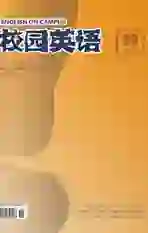Transit—Oriented Development and sustainable travel pattern
2018-08-17李赫宸
李赫宸
Rapid economic growth continues to attract large numbers of people to urban areas. Small automobiles have become a staple property for ordinary families, resulting in more traffic jams and severe pollution in many urban areas. The number of daily trips using private cars in urban areas was 3.5 billion in 2005. This is expected to rise by 80% in 2025, to 6.2 private daily trips (Pourbaix, 2011).
Petroleum consumption and GHG emissions will also increase by 30 percent at current rates, and a similar growth in traffic fatalities can be expected (Cervero, 2013). As an alternative, public transport can not only can reduce traffic in urban areas but can also preserve energy and is conductive to the reasonable use of urban land (Chen and Liu, 2001)Transit-Oriented Development (TOD) refers to the reasonable or higher density redevelopment of land in the vicinity of main public transportation stations.
The completion of TOD traffic networks has significantly influenced residents travel habits. High availability of regional public transportation services will encourage people to travel by bus, therefore reducing the need for small automobiles (Arrington and Cervero, 2008). One reason for TODs expansion during early stages is the policies of local governments, namely the municipal government buying land at a low price in order to provide space for infrastructure and services. Developers are then charged higher prices to rent the land, which becomes an effective way for municipal governments to create income (Gakenheimer and Yang, 2006).
Some scholars have argued that public transportation services are conductive to increased consumption in the vicinity of stations or stops (Thompson and Matoff, 2000). However, data suggests that people using small private cars are more likely to go shopping in the vicinity of TOD stations and stops. One possible explanation for this is that their incomes are higher and there is only a short distance between the shopping centers and the nearest metro stations (Zhao et al., 2016). However, other studies indicate that high volumes of public traffic may make it more convenient for people who need to travel long distances, which then lowers the likelihood of increased residential shopping in TOD areas (Cervero, 2006)
TOD development, however, is not without its challenges. One key example of this can be seen when looking at suburban Chine, where transit investment and urban development is happening at different rates. Because of this, much of the urban development has not been linked up with the railway expansion (Zhang, 2007).
TOD has been successful in some cities and cosmopolitan areas in Asia. Heavy usage of cheap rail transit helps reduce demand for and use of private cars (Richard, 2012). Furthermore, TOD has helped Columbia increase international competitiveness, attract substantial investment and create thousands of new jobs (Cervero and Murakami, 2009). In order to continue to successfully, singular residential development should be avoided so that recouping investment during the process of land development is done in a sustainable manner. A mixture of usages of the lands should be ensured and land development relating to employment, such as offices and other commercial buildings should be included to facilitating the creation of local jobs. This would create balanced environments and stable price levels in the vicinity of TOD stations, meeting a wide variety of different demands, and encouraging residents to consume near TODs (Zhao et al., 2016). When conceptualized as part of a strategic regional planning effort, international experience suggests that an integrated network of TOCs can help to create a ‘‘Transit Metropolis, arguably the most sustainable urbanization format in the worlds megacities (Cervero, 1998).
References:
[1]Arrington,G.B.&Cervero;,R.TCRP Report 128.Effects of TOD onHousing,Parking, and Travel.Washington,DC:Transportation Research Board of the National Academies.
[2]Cervero,R.(2006).Office Development,Rail Transit, and Commuting Choices.Journal of Public Transportation,9(5),pp.41-55.
[3]Cervero,R.and Murakami,J.(2009).Rail and Property Development in Hong Kong:Experiences and Extensions.Urban Studies,46(10),pp. 2019-2043.
[4]Gakenheimer,R.and J.Yang.2006.Land use and access in the Chinese city.Paper prepared for the flagship series on trans-port,energy,and environment in China,Energy Founda-tion,San Francisco,CA.
[5]J,P.(2011).Towards a smart future for cities:Ur- ban transport scenarios for 2025.Public Transport Inter- national,60(3),pp.8-10.
[6]Liu,D.and Chen,J.(2001).Urban Parking Facilities Location Model and Genetic Algorithm Design.Journal of China Highway Journal,14 (1),pp.85-88.
[7]Lund,H.(2006).Reasons for Living in a Transit-Oriented Development, and Associated Transit Use.Journal of the American Planning Association,72(3),pp.357-366.
